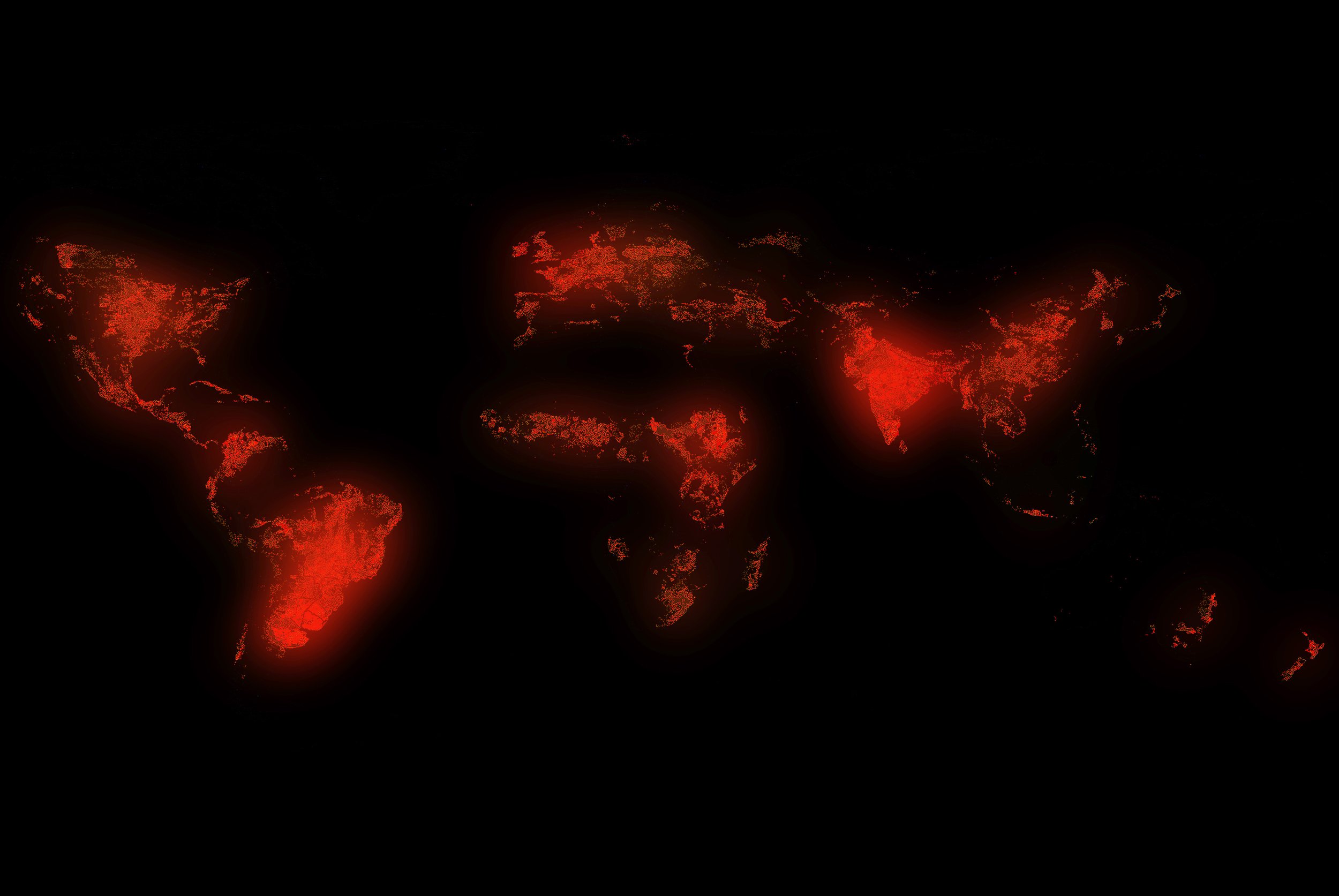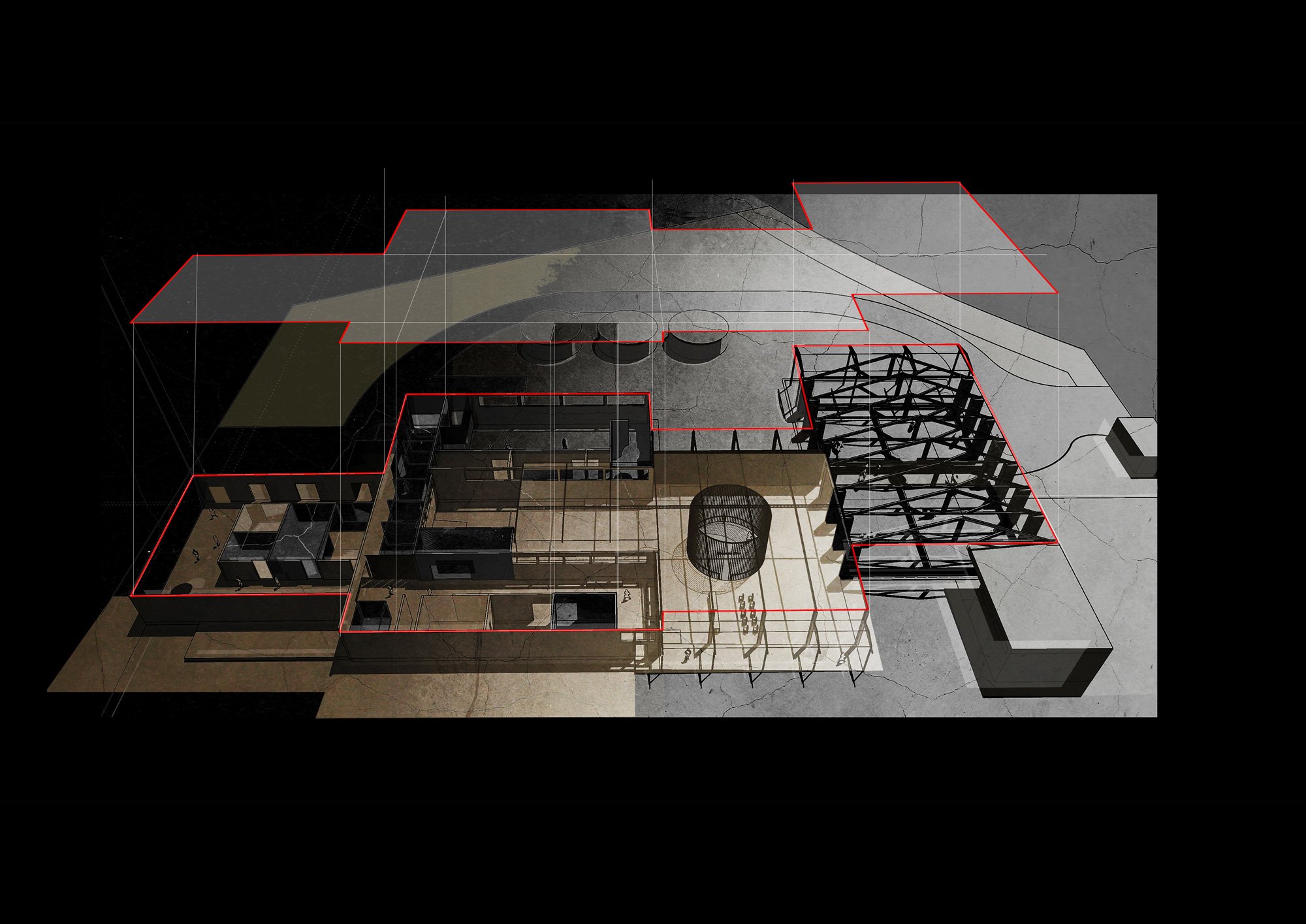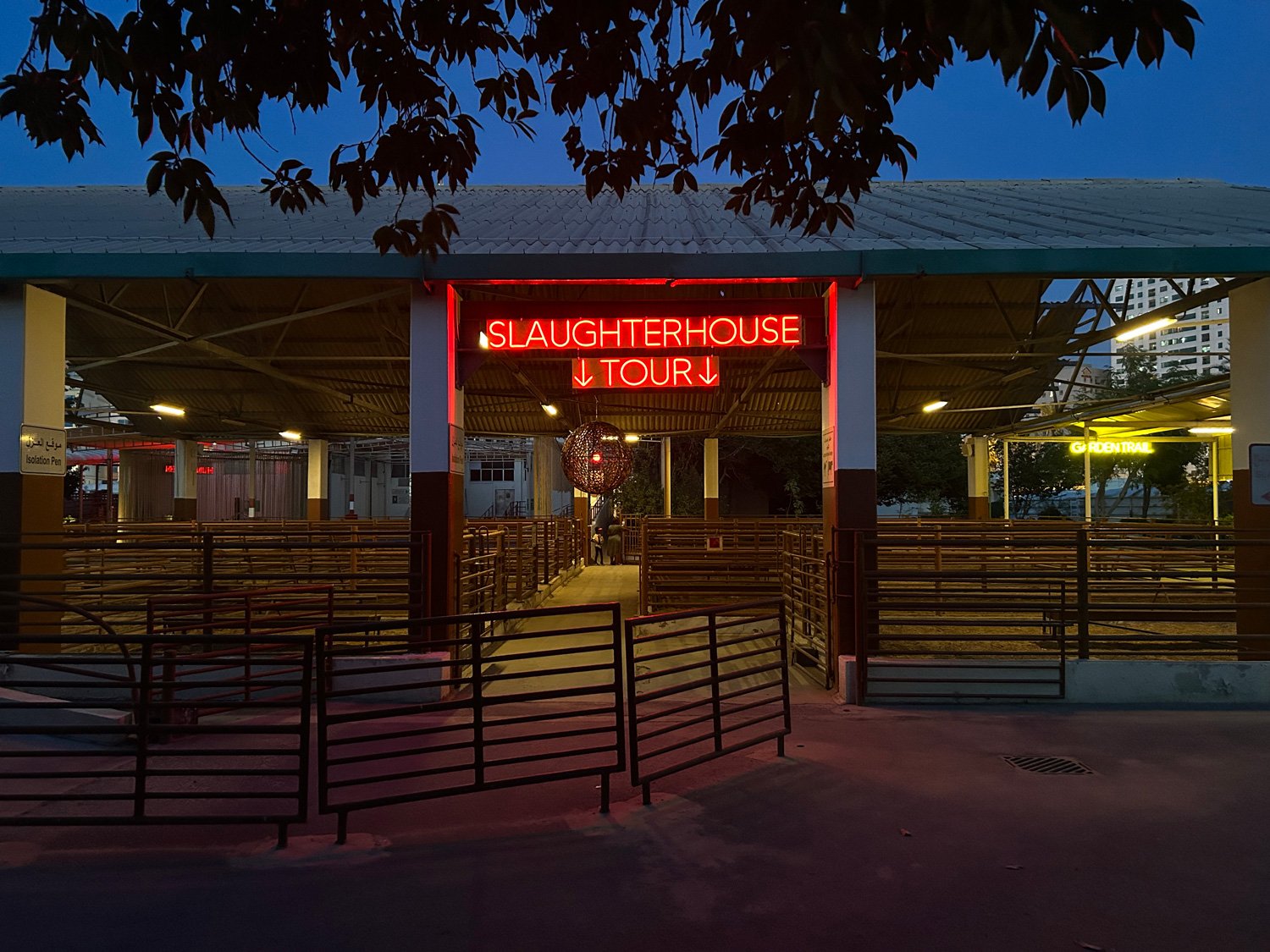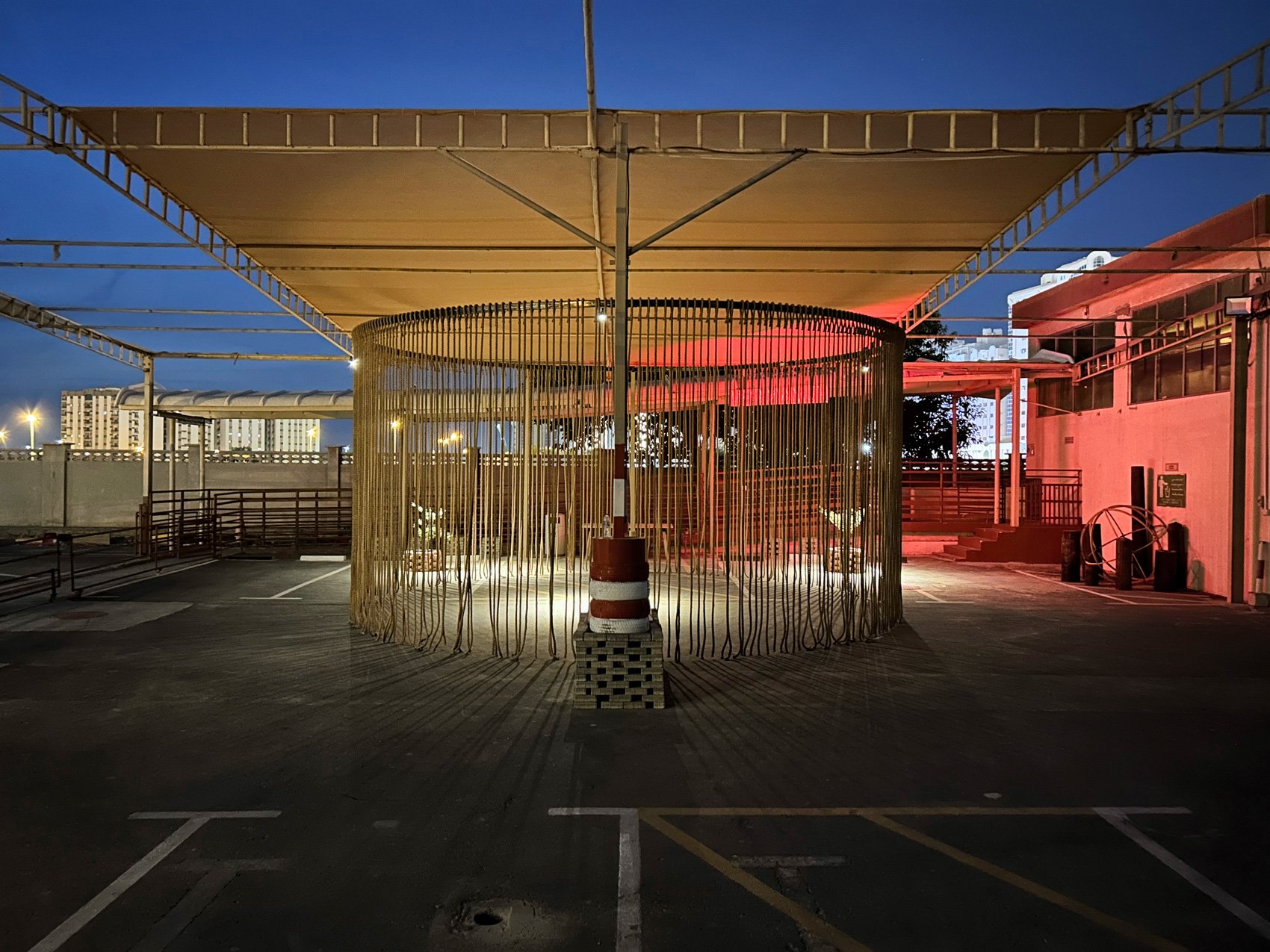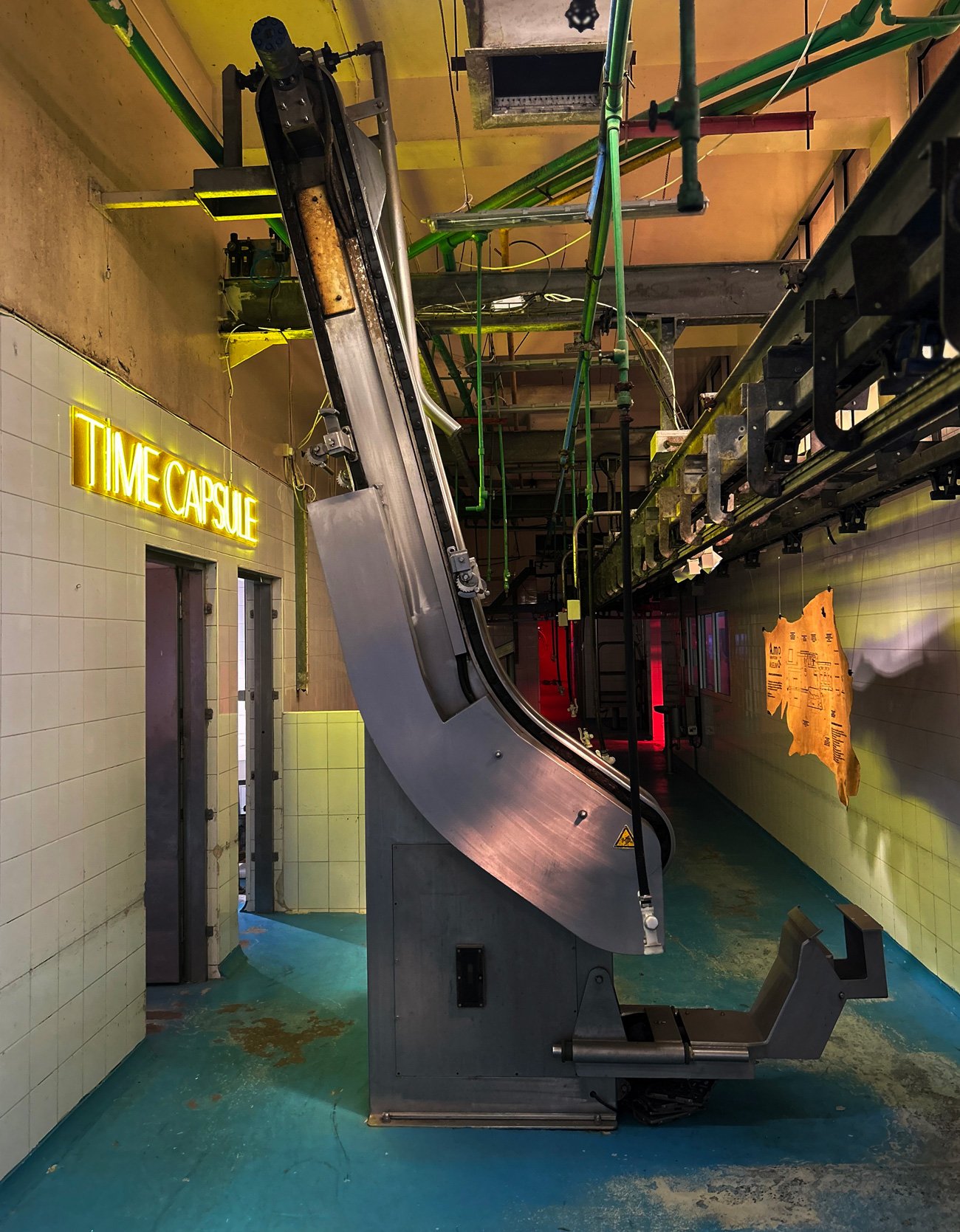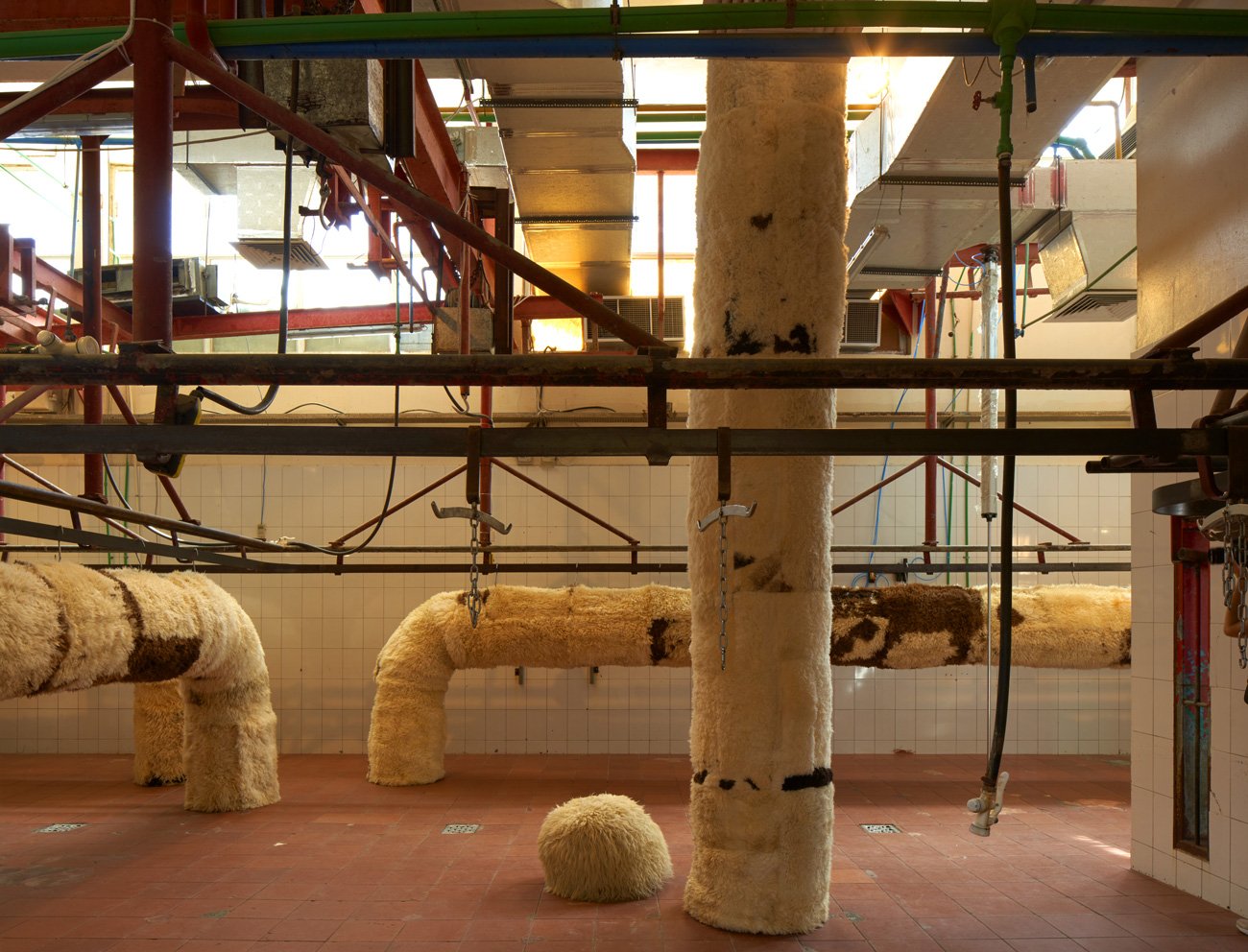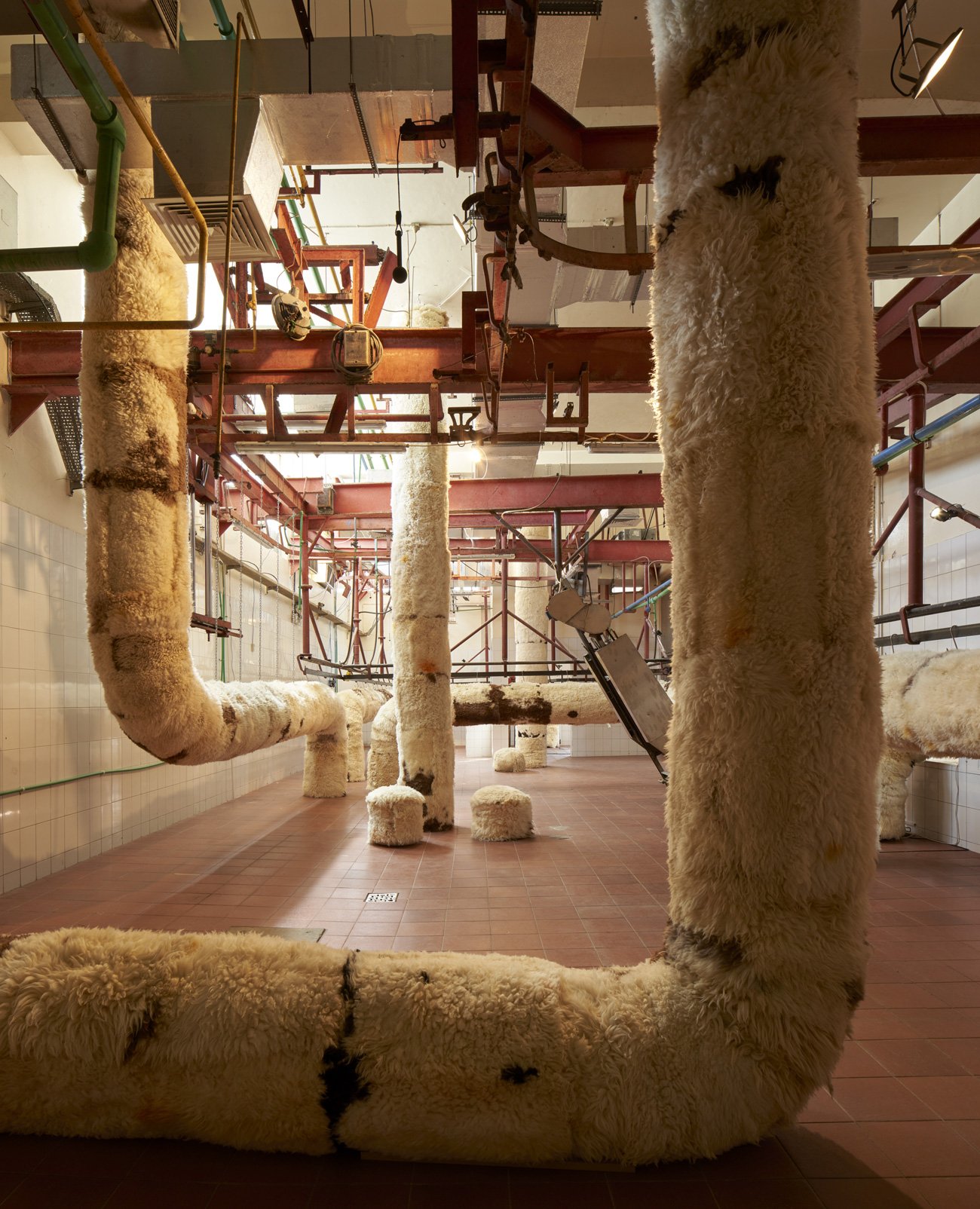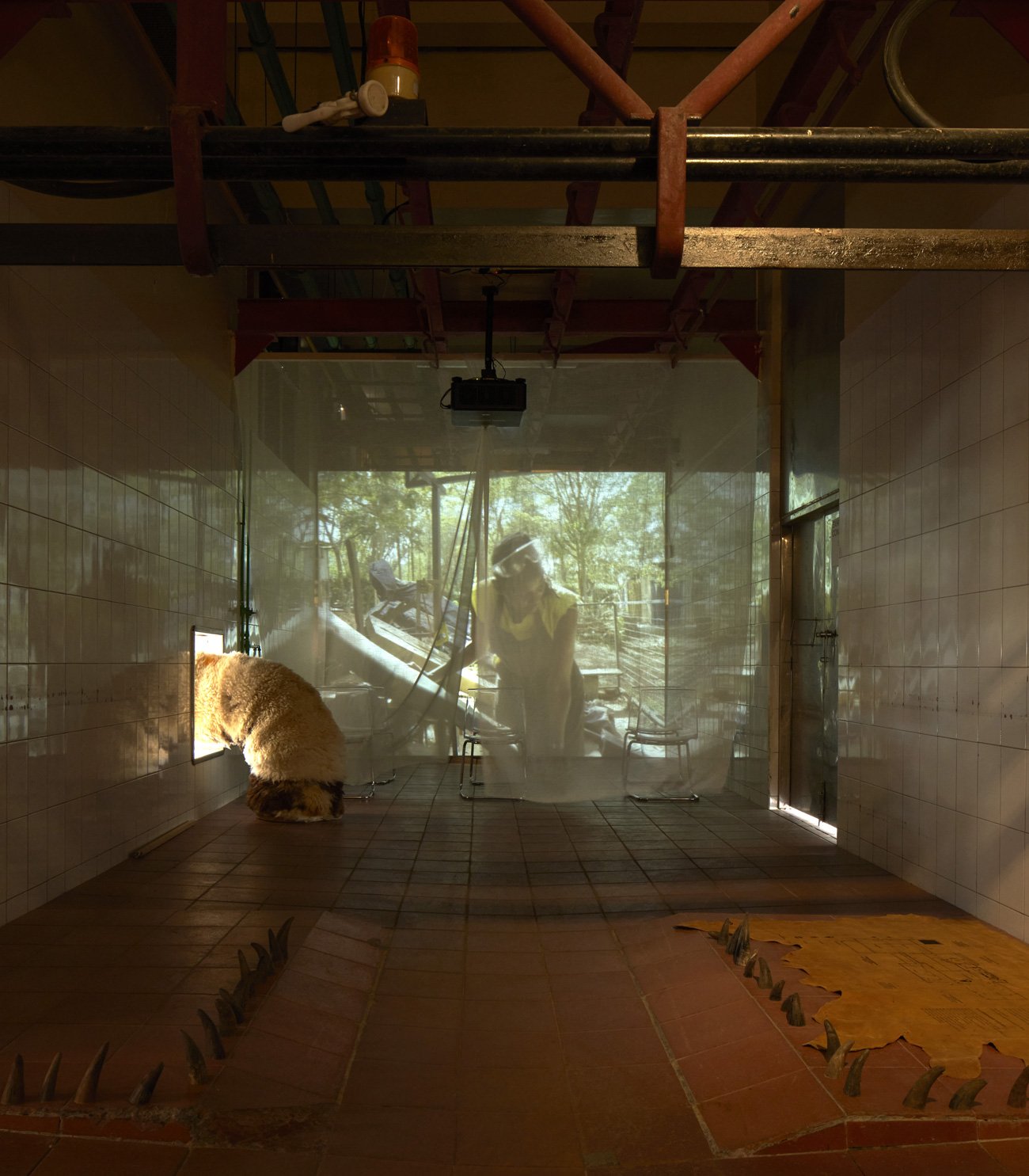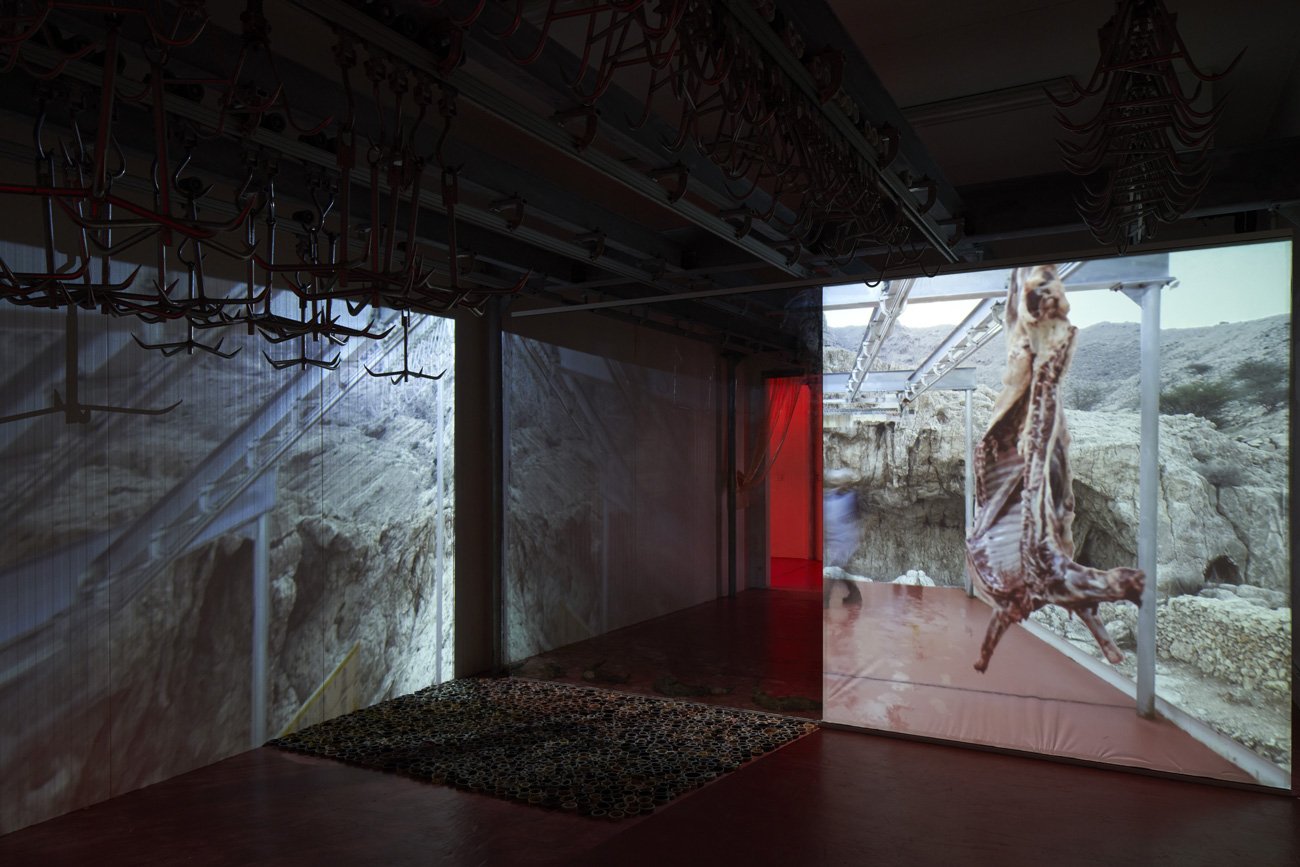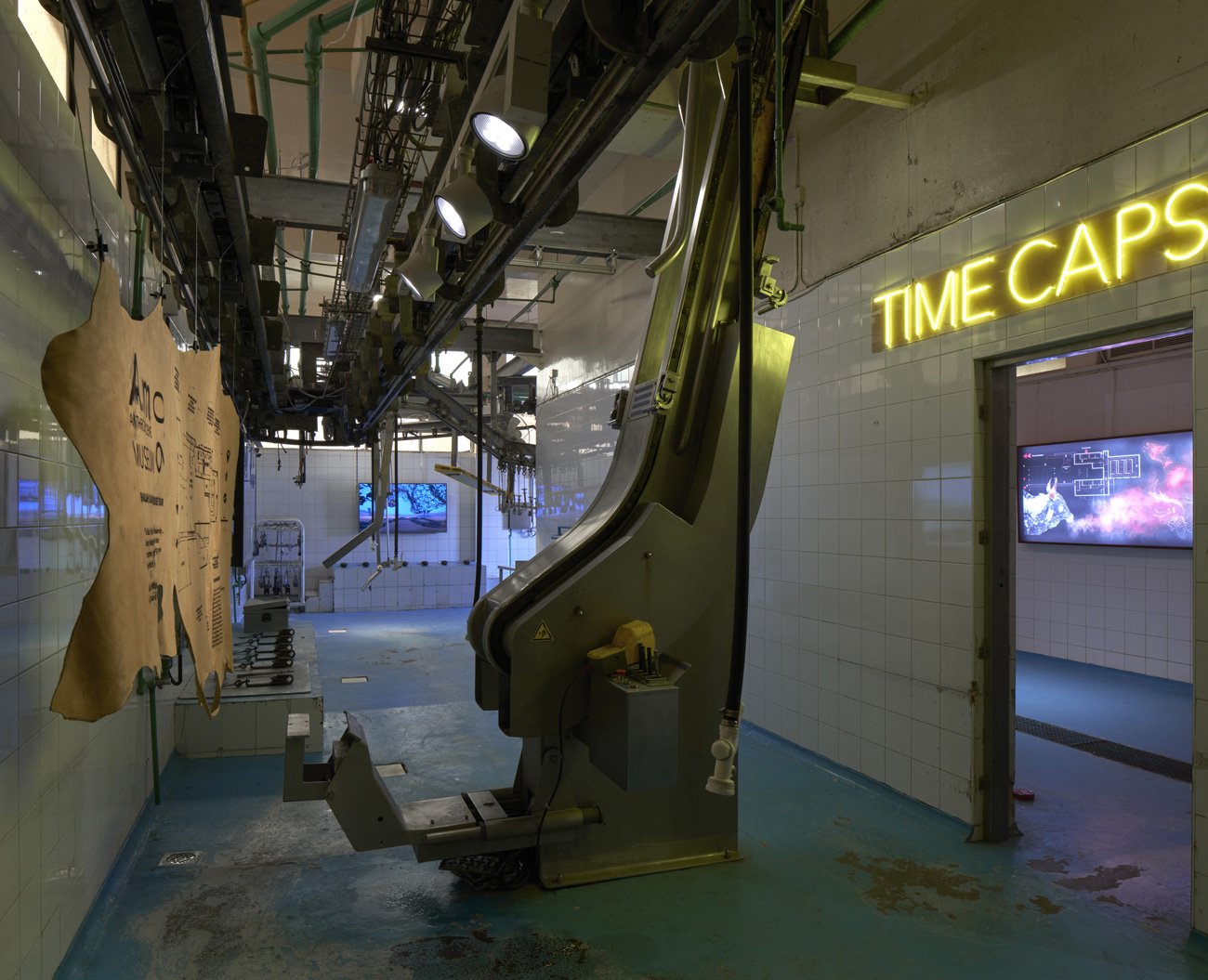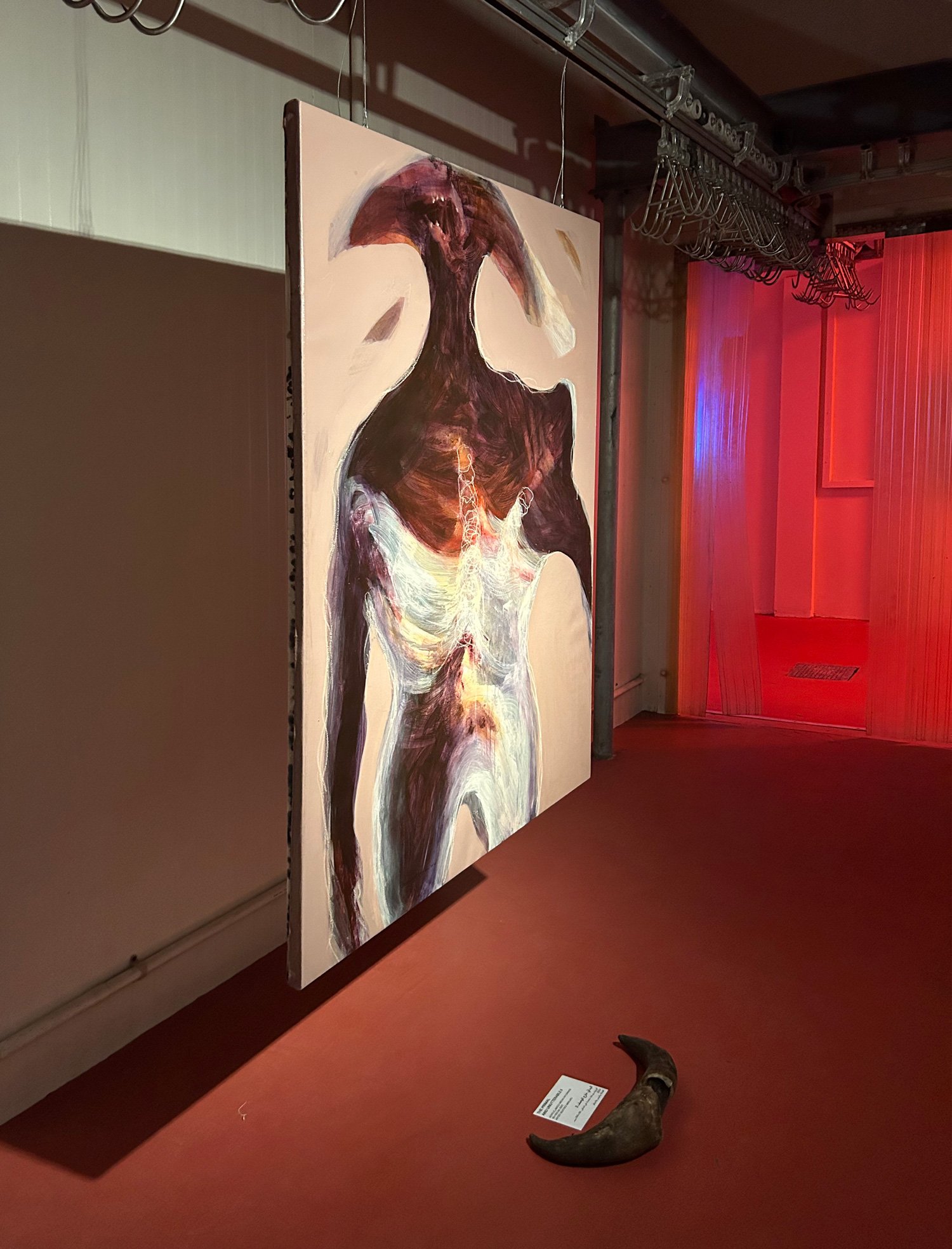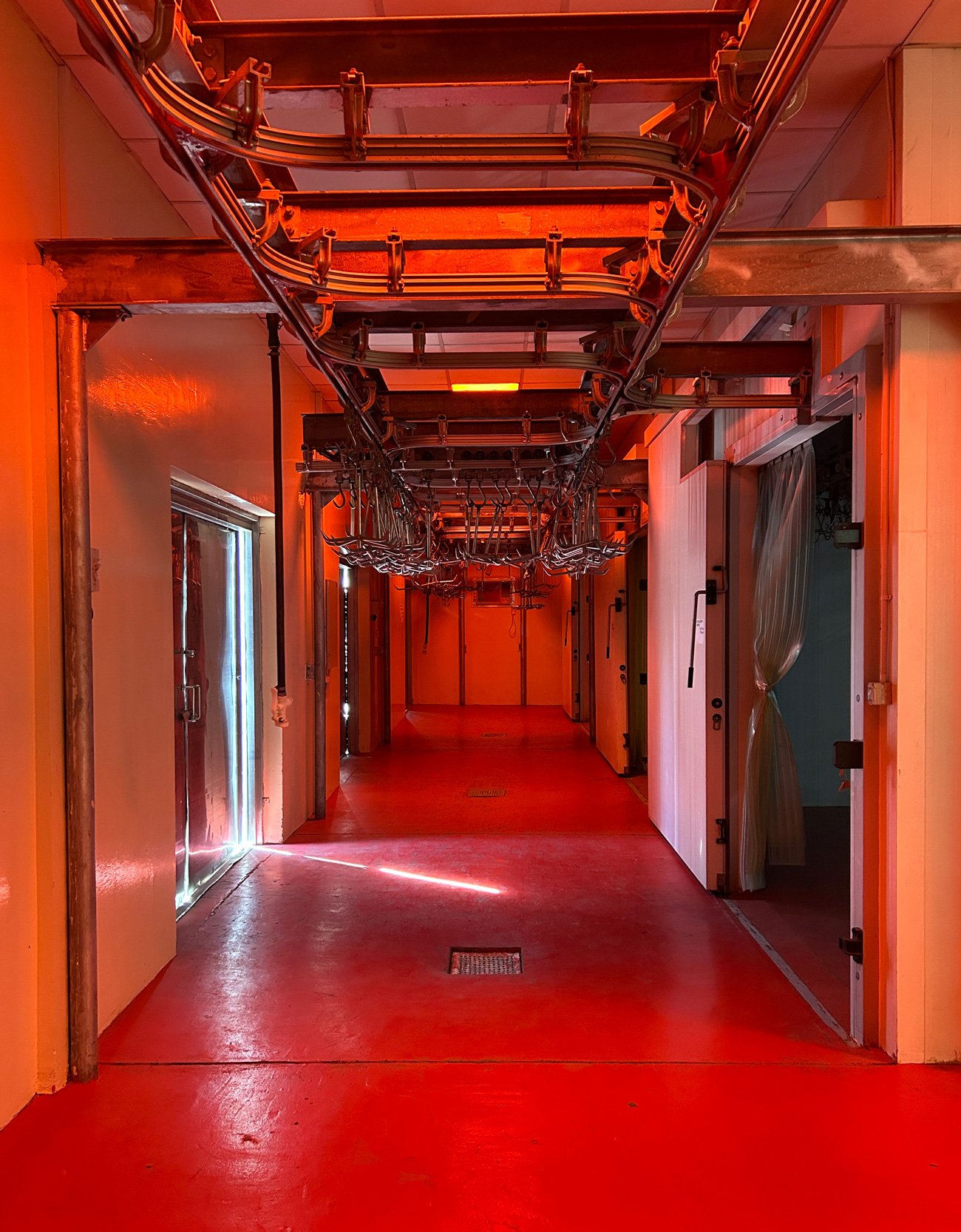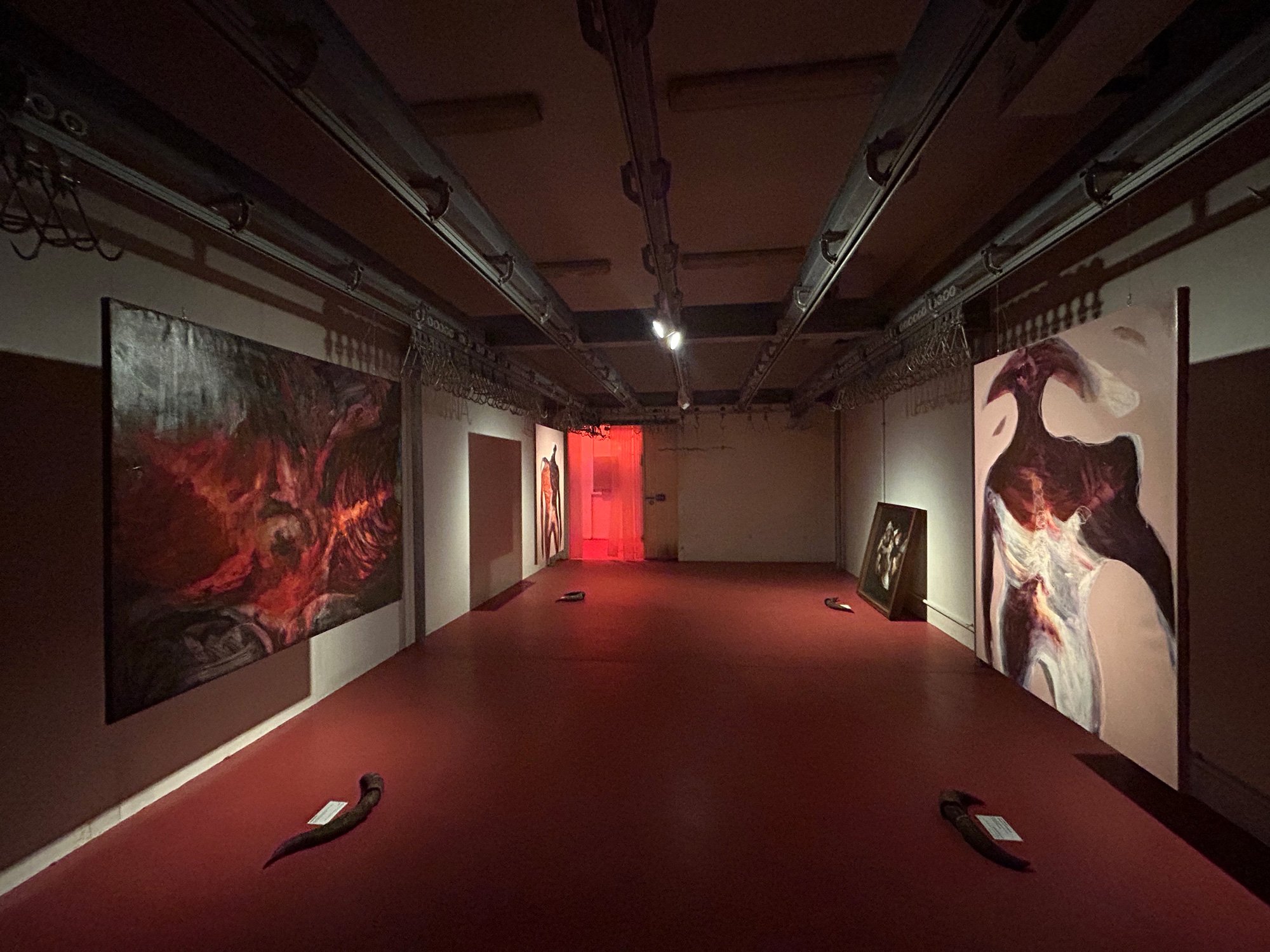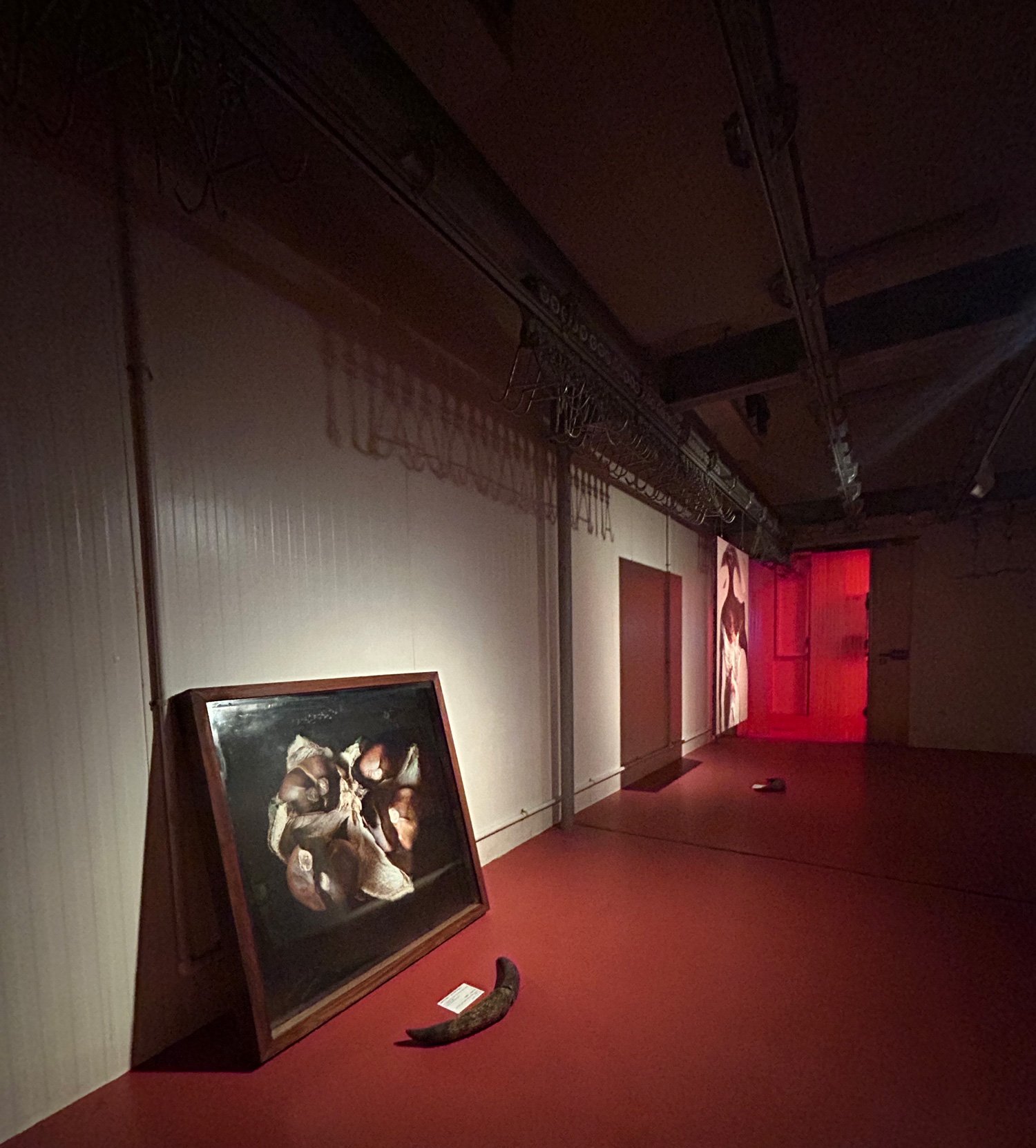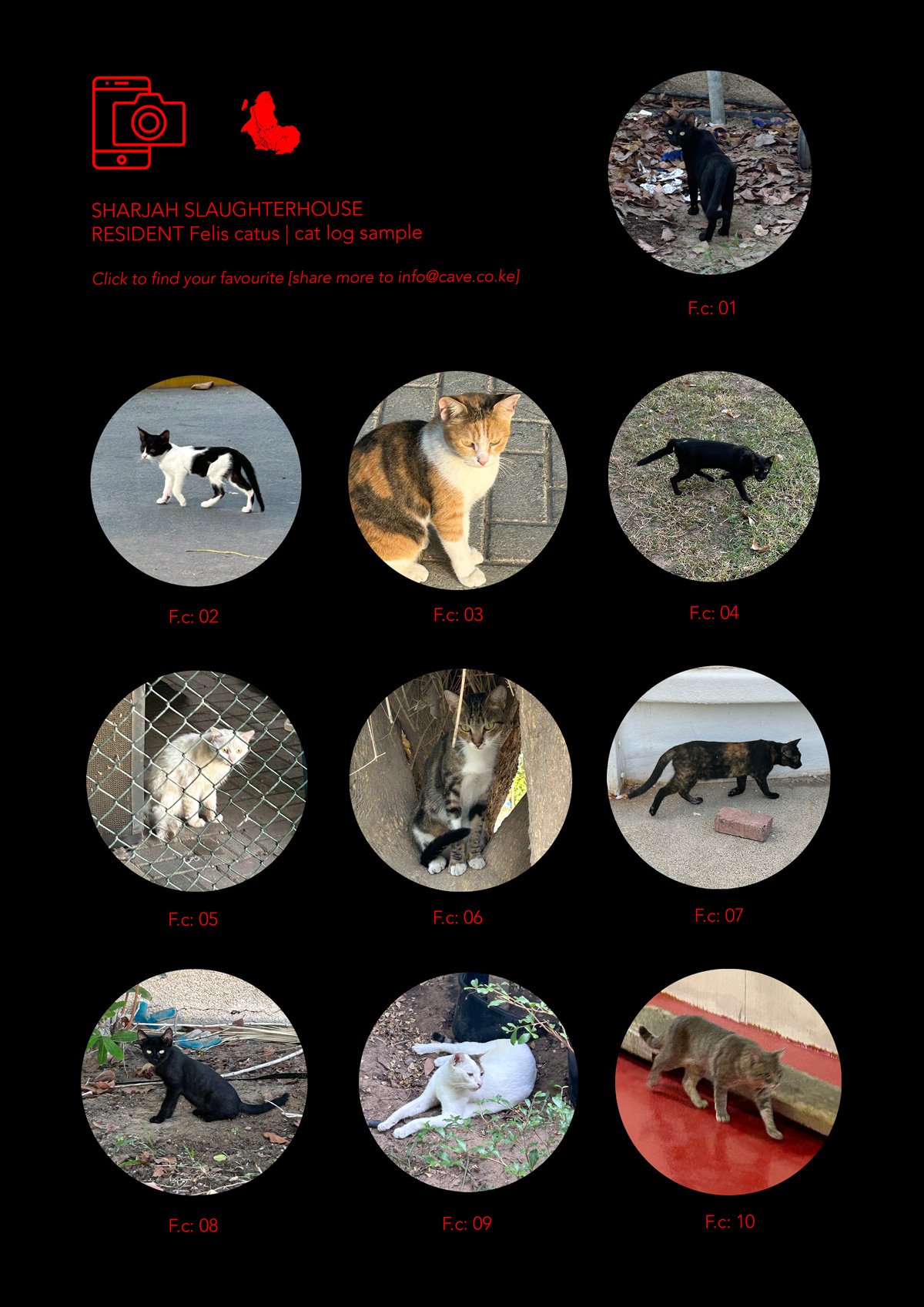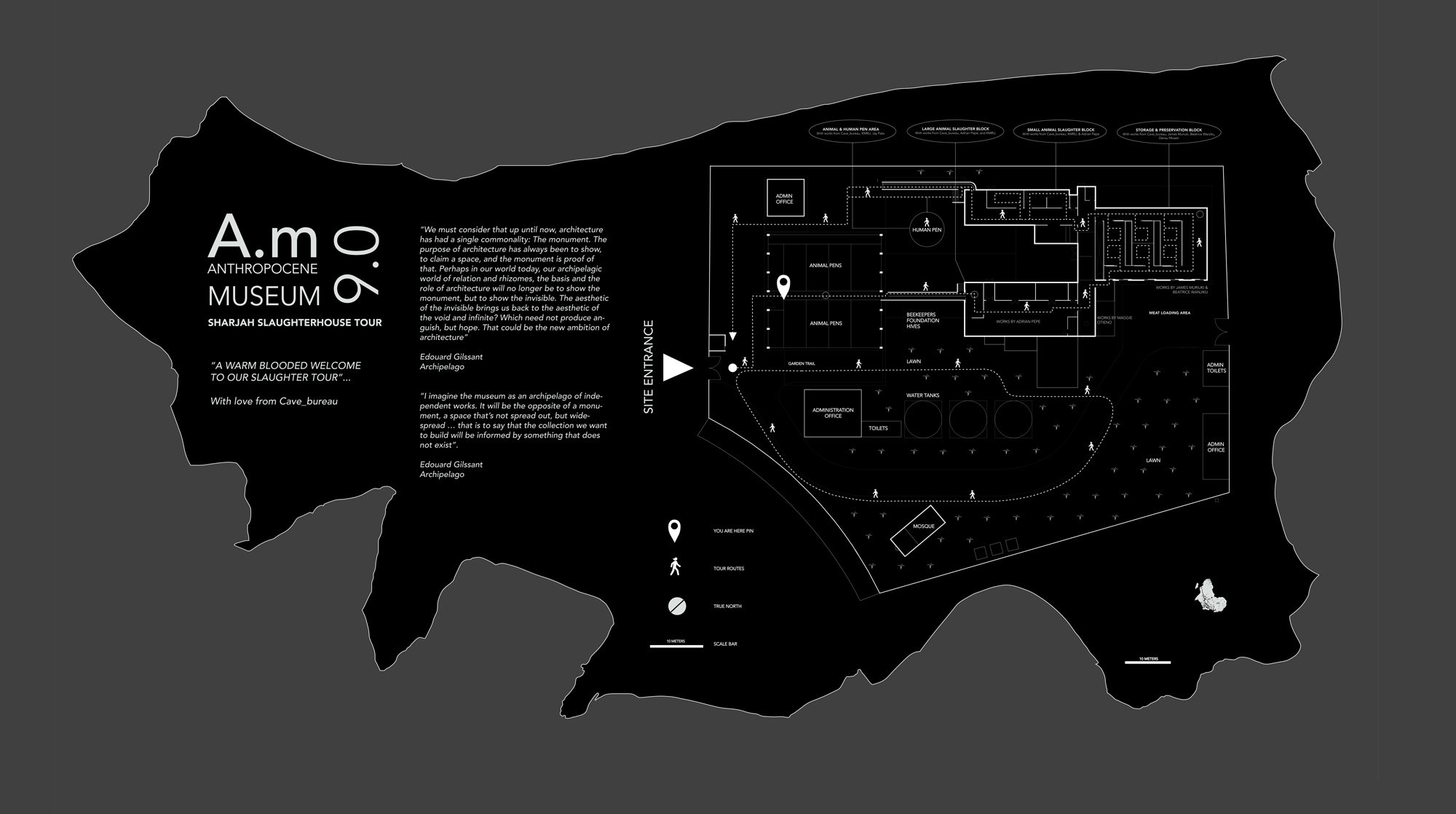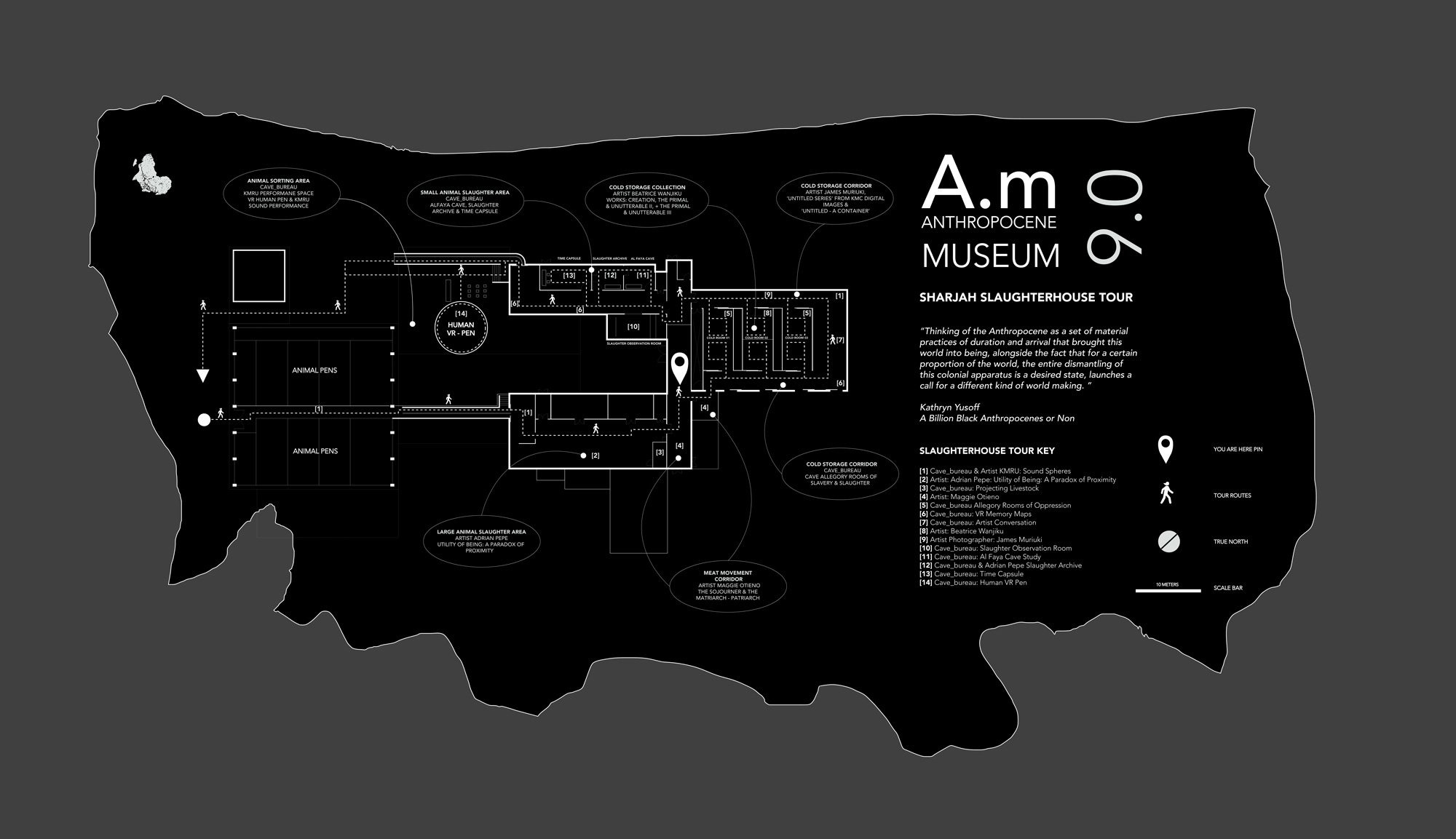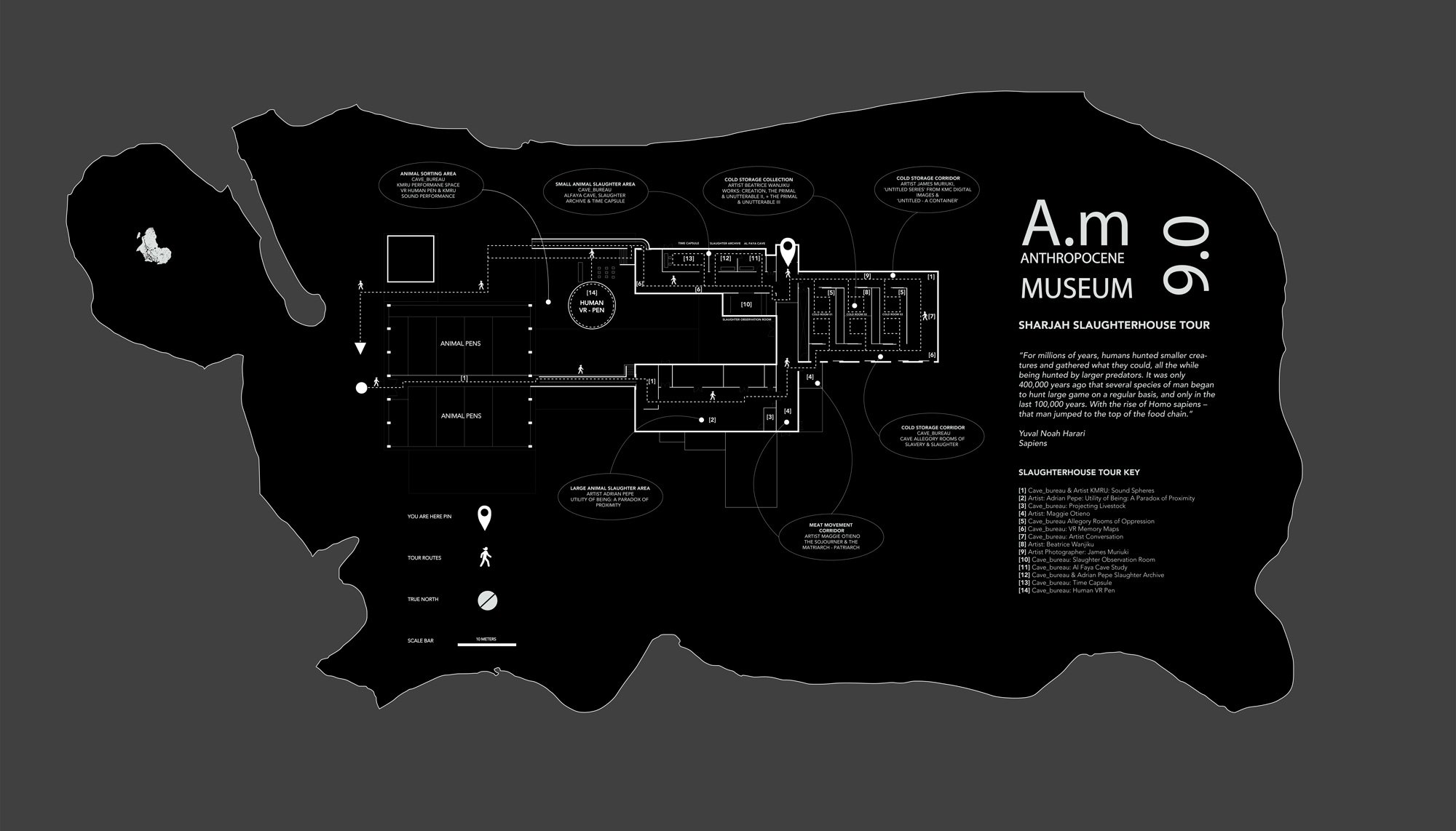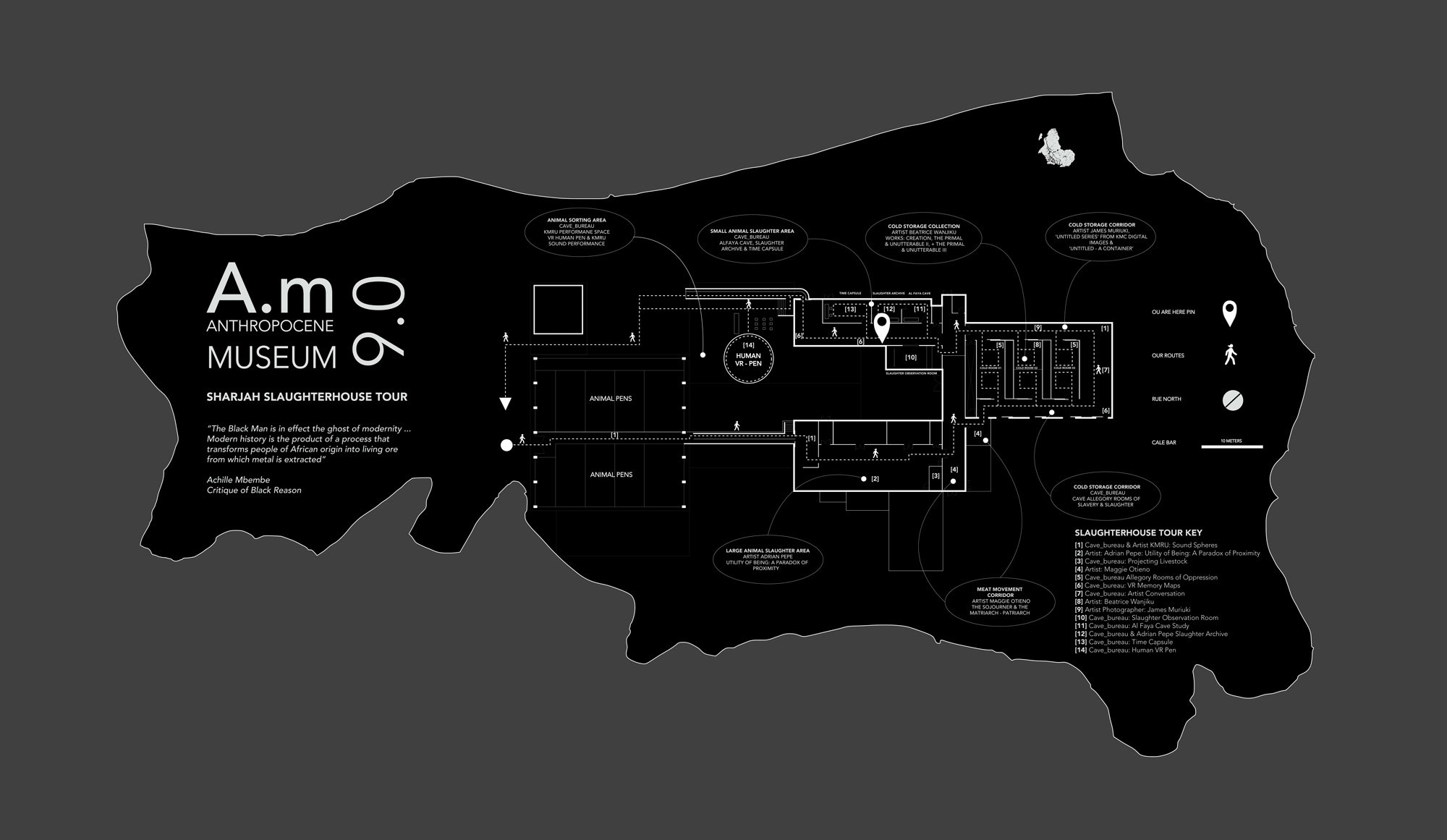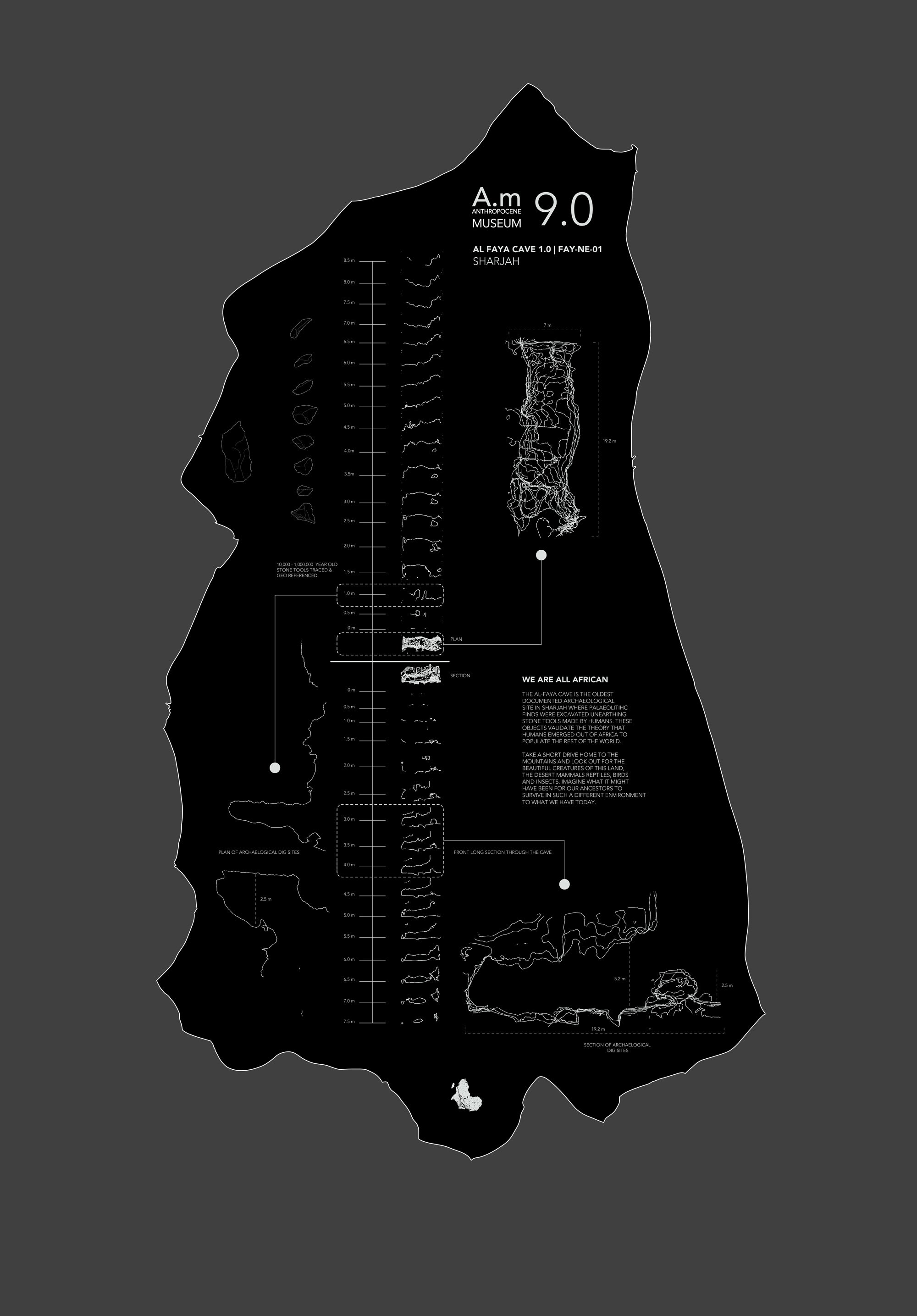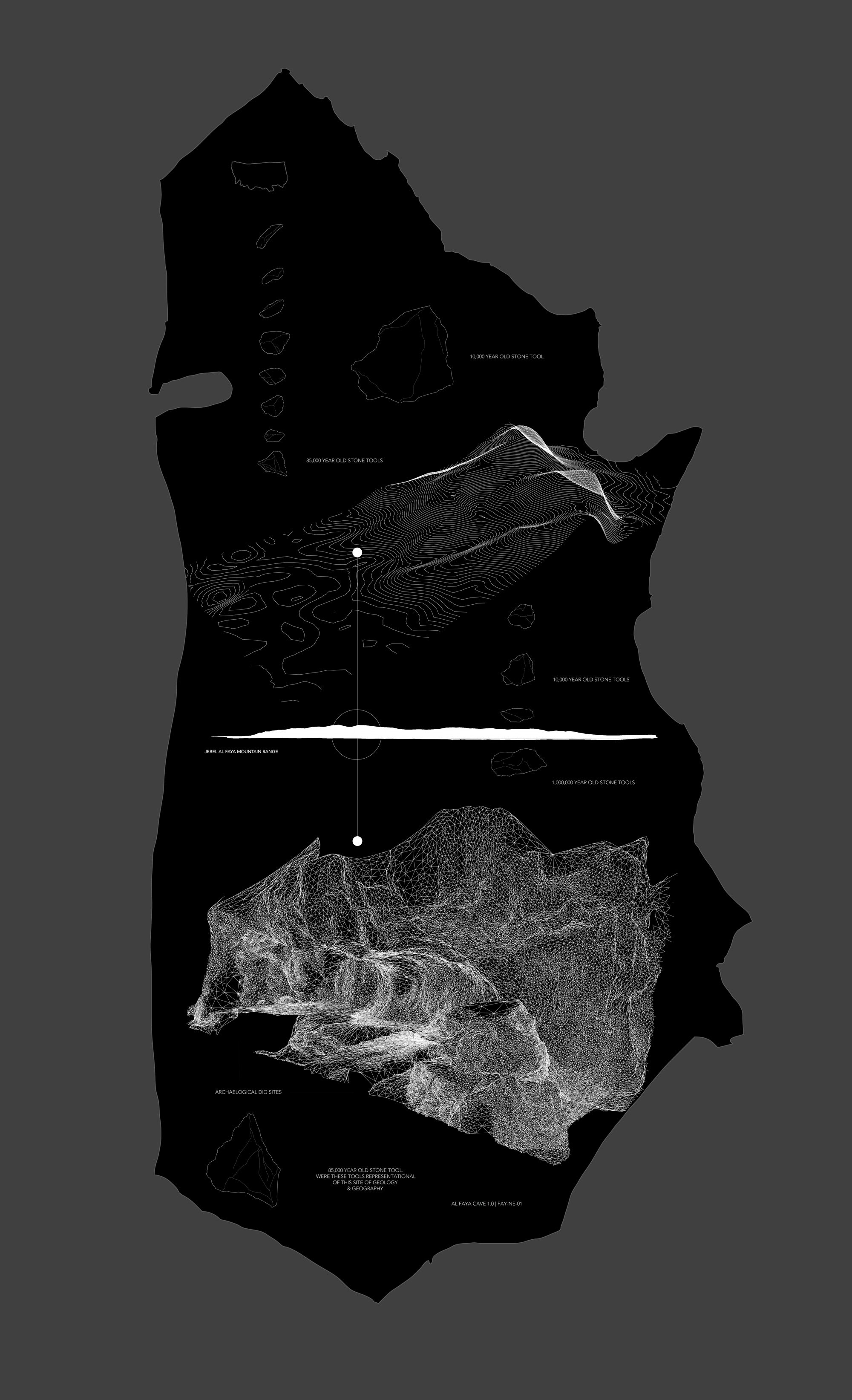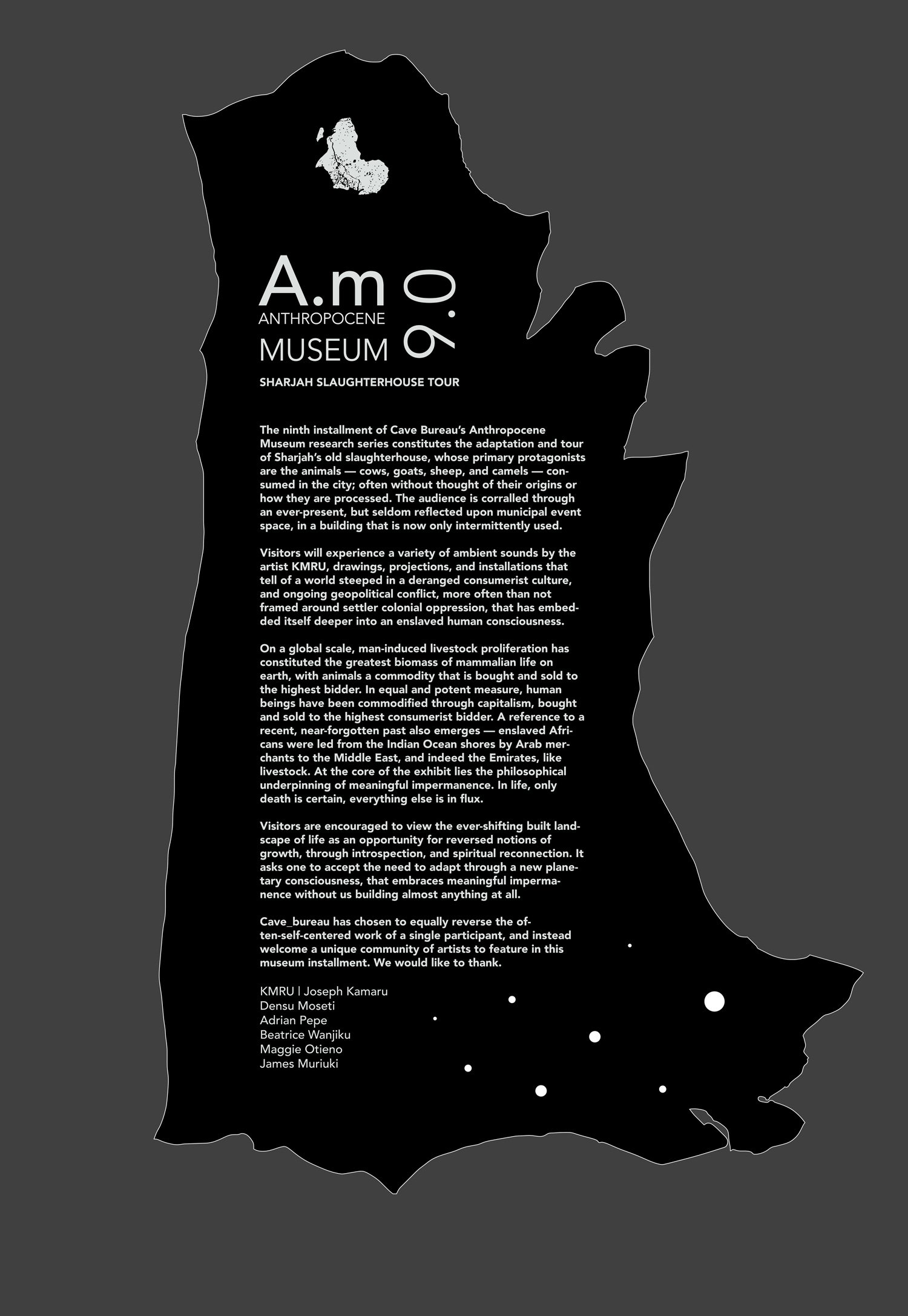ANTHROPOCENE MUSEUM 9.0 | Sharjah Slaughterhouse Tour
This exhibition is the largest curatorial iteration of the museum. We were invited to participate in the Sharjah Architecture Triennial (SAT), where we selected a site in the city of Sharjah, UAE, and make an architectural intervention. We chose the old slaughterhouse as an extension of the wider curatorial strategy of SAT, that works to embed its exhibition programs within the broader fabric of the city. We reflected on this as a form of what we call reverse futurism, where neglected and forgotten parts of the city are reimagined and adapted using a rich cultural exhibition programme to transform the urban and rural grain of Sharjah over time.
In contrast to the purely human centred approach, the museum focused on the primary protagonists of the site being the animals — cows, goats, sheep, and camels — consumed in the city; often without thought of their origins or how they are processed. Visitors to the site are corralled through an ever-present, but seldom reflected upon municipal event space of 3,500 square meters, intermittently used outside the public’s consciousness.
On a global scale, man-induced livestock proliferation has constituted the greatest biomass of mammalian life on earth, with animals a commodity that is bought and sold to the highest bidder. In equal and potent measure, human beings have been commodified through capitalism, bought and sold to the highest consumerist bidder. A reference to a recent, near-forgotten past also emerges — enslaved Africans were led from the Indian Ocean shores by Arab merchants to the Middle East, and indeed the Emirates, like livestock.
The Beauty of Impermanence
At the core of the museum lies the philosophical underpinning of meaningful impermanence. In life, only death is certain, everything else is in flux. It was not only brave but incredibly progressive for both the Sharjah Architecture Triennial, and the Sharjah City Municipality to have allowed us to intervene in this space, especially in-between peek slaughter seasons.
It expresses the possibilities of impermanence within cities, where cultural institutions need not be heavy and independently constructed, but can intermittently and almost immaterially roam through the urban fabric, with a very small carbon footprint, and yet with equal if not greater epistemological potency.
Small animal slaughter area. Time capsule entrance.
View into slaughter observation room.
Photographs by Edmund Sumner, courtesy of the Sharjah Architecture Triennial
Installation by Adrian Pepe
“Utility of Being '' is a site-specific installation conceived from the gathered pelts of the fat-tailed Awassi sheep—a natural byproduct of the slaughtering process in the region. The installation comprises of pneumatic tubular forms echoing the visceral lines of animal entrails. The continuously inflated bodies penetrate and traverse the space while suspended from the hooks and rails originally used for handling animal carcasses. The work serves as a metaphor for understanding the tension that lies at the edge of survival and commerce, challenging notions of human-animal relationality, the alchemy of material processes, and the fragility of biological existence”. Adrian Pepe. Read more here.
Cave allegory installation within the slaughterhouse cold rooms.
Experiments in Museology
We expanded the bounds of museology while using a minimal footprint by adapting this early 1980s building to hold multiple artist works that comprised of painting, photography, sculpture, installation, sound, and virtual reality. AM 9.0 featured fresh new and old works by Joseph Kamaru KMRU, Densu Moseti, James Muriuki, Beatrice Wanjiku, Maggie Otieno, Adrian Pepe, Jay Patel, and Ogeto Nyamwaya. We also used the words of prolific thinkers laser printed on cow hide drawings of the building to accompany people through the spaces of slaughter.
"In the end, the idea is to bring the world into contact with the world, to bring some of the world’s places into contact with others … the works of art must create the museum rather than the museum creating the works of art". Edouard Glissant
The images above show a chronological sequence of experiences generated throughout the slaughterhouse site.
Museum movies
We screened the following short films in the slaughterhouse to give artists the time to share their thoughts about the theme of the exhibition, and talk about their work positioned in this building of slaughter. A site that for almost half a year will be perceived as both a place of slaughter, and abattoir of critical cultural exchange.
Artist Beatrice Wanjiku
Artist James Muriuki
Artist Maggie Otieno
Human Pen VR Experience
This VR experience places you within the ruins of the old Sharjah slaughterhouse where the future is not as dark as it may appear, instead it shows a new kind of existence where we must live in the midst of a climate emergency that has pushed us to adapt to new ways of living. Rainwater collecting horns hover in the desert sky in the shape of the Al-Faya Palaeolithic cave of Sharjah, anticipating the incoming storm, while the masked herdsman prepares for harvest. [VR art collaboration with Jay Patel, soundtrack by KMRU].
Slaughter Observation Room
WARNING! FOOTAGE OF ANIMALS BEING SLAUGHTERED …
We surveyed the Al Faya Cave on the outskirts of Sharjah city, a site where our early palaeolithic ancestors processed their food under limestone rock shelters. This specific cave was one of the earliest caves inhabited by early human life outside Africa dating over 130,000 years ago. A UNESCO World heritage site where a special assemblage of stone tools dating over 85,000 years old were found, today stored at the Sharjah Archaeology Museum.
We hope visitors will view the ever-shifting built landscape of cities as an opportunity for reversed notions of growth, through introspection, and spiritual reconnection. By taking visitors into a different and often uncomfortable space such as this, we consider that exhibitions can potentially trigger a broader planetary consciousness, that attempts to apprehend our state of existence in the world today without almost building anything at all. The exhibition is on until March 10th 2024.
Note to audience: No animal was slaughtered for the purpose of conceiving or producing this museum exhibition.


